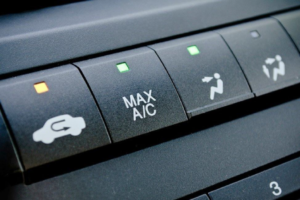Hayward Score identifies the major issues in your home that can impact your health and gives you personalized actionable recommendations to fix them!
What is Hayward Score?
Hayward Score identifies the major issues in your home that can impact your health and gives you personalized actionable recommendations to fix them!
The first clue that something may be off with your car’s ventilation system is usually odor.
A “musty” odor typically indicates mold while an “old sweat sock” smell typically indicates bacteria. Regardless, something isn’t quite right and action is needed. Usually, this happens as a result of condensation from the A/C unit not sufficiently draining from the pan.
If you notice an odor, start with the following steps to see if they will resolve the problem:
- Check to be sure that your A/C drain is not clogged. After the vehicle has been operating for 20 min. or more when you park the condensation water should drain from under the engine. Depending on your vehicle it may be visible or you may need to move to see if water is draining. If you believe it’s clogged you will need to have the A/C system serviced.
- If the A/C system is draining and you still have an odor then turn the A/C off before shutting the car off. Allow the fan to run to help blow moist air from the vent system. What your trying to achieve is forcing the water to evaporate from the drain pan. You may need to do this each time you shut off the vehicle to eliminate the odor returning.
- It is also recommended to run your A/C compressor (A/C button = On) continuously regardless of whether you are heating or cooling. FYI- the A/C mode removes moisture while the temperature setting determines if the air is hot or cool. This works well in the winter when you trying to defrost your windows.
If these steps don’t resolve the odor problem, move on to cleaning your car’s ventilation system.
The fundamental step in all remediation efforts is to physically remove the growth from the affected surfaces. In the case of your car’s ventilation system, dust and dirt often collect on the A/C coils and drain pan as well as in air ducts. When the coils and pan stay damp, mold and bacteria can grow. Because these surfaces are not easily accessible, an indirect cleaning method is used.
An anti-microbial product applied to the coils and drain pan should stop the odor. Choose a product that is effective without corroding the equipment and one that does not trigger reactions for anyone who uses the car. A non-fragranced product is strongly recommended. One product that has proven effective for many people is called NutriBiotic and can be found at health food stores. It’s an effective antimicrobial without a fragrance. It is a thick liquid, so mix it with water before using, but twice as strong as the manufacturer’s instructions suggest.
If you can’t find a non-fragranced product, be sure to test anything you plan to use outside of the car prior to application, because, if reactions occur after application, the product can’t be removed. Consider spraying the product in a plastic bag and see if you or family has a reaction.
Prepare at least a pint of liquid and put it into a trigger-type spray bottle, which will allow for the easiest application.

Turn on the car engine and place the A/C fan on high. Select “outside air” rather than “recirculate”: [Photo 1, above] . Run the air output to the dashboard vents rather than toward the floor. Open the windows while performing the deodorizing.

Locate the air intake. It will almost always be near the top of the hood near the bottom of the windshield and toward the center across the car. Spray about 1/2 cup of the mixture. Shift the air exhaust from vent to floor and spray another ½ cup of the mixture. You should end up with about a cup remaining.
Because the A/C coil is buried inside the car, most of what you spray will never make it into the A/C unit. It will, collecting on and dripping off the grill, [Photo 2, above] and the sides of the ducting and all other areas structures. But by the time the bottle is emptied, there has almost always been enough spray reaching the interior of the A/C unit to make a difference.
To see if you have been successful in removing the odor, put the windows up and,sit in the car and smell the air blowing out of the vents. If you were really impacted by previous exposure to the odor, you may want to have someone else do this step first.If the odor is gone or at least gone to the point it is acceptable, you are done! If not, repeat the process with the remaining cup of mixture.
If it still isn’t good enough then a more direct cleaning method is needed.
Take the car to either the dealer or a repair shop and bring your preferred disinfectant with you. Ask the technician to clean the drain pan and continuously flush with your disinfectant (not theirs) through the A/C system. Run it until the discharged liquid is clear of debris and discoloration. If this process is not successful then either the issue can’t be fixed or the cause of the odor is not the A/C system.
For more about mold prevention in your home, read our article Stop Growing Your Mold.
How useful was this article?
Click on a star to rate it!
We are sorry you didn’t find this article helpful.
Thanks for your feedback!
Hayward Score helps you discover how your home may be impacting your health in minutes – – for FREE!
Answer a quick set of questions then get a personalized list of action items. Transform your home and health today!

ARE YOU CONCERNED YOUR HOME IS MAKING YOU SICK?
Our guide on indoor quality will help you diagnose possible issues and implement intelligent solutions to improve the quality of the air inside your home.
















